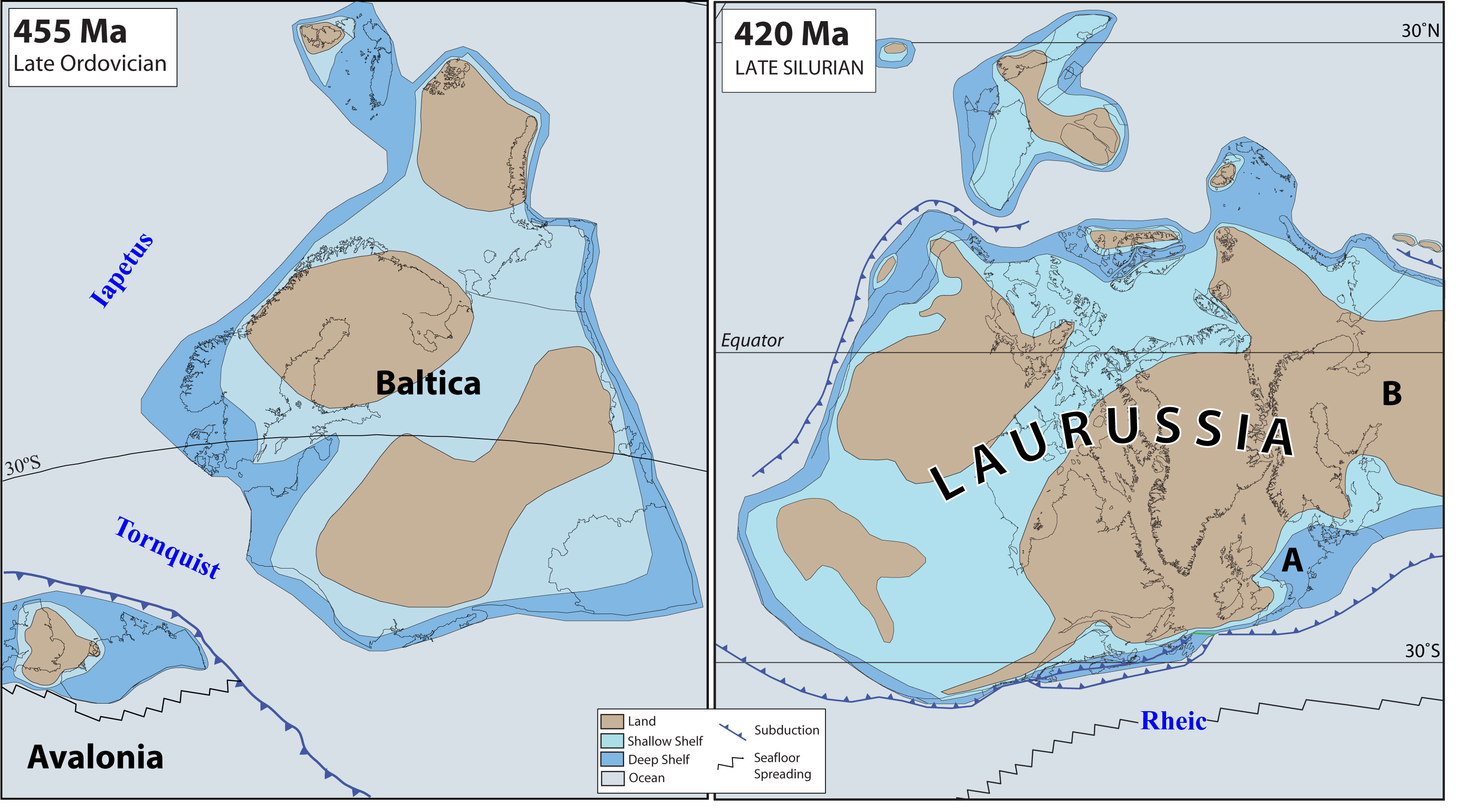Regional Tectonics, Paleogeography and Geodynamics
Paleomagnetism is mainly focused on obtaining the information about the Earth's magnetic field in the geological history recorded in the natural remanent magnetization of rocks. Once understood, the knowledge about the changes in directions and intensity of geomagnetic field can be very efficiently applied to the research of regional tectonics, global paleogeography and even to the deep Earth dynamics. The paleomagnetic record has an enormous advantage over the other geological archives. Since the geomagnetic field is a planetary phenomenon, its record is consistent in the entire planetary scale. Consequently, if the natural remanent magnetization is preserved over geological times, rocks of the same age in different regions of the globe should exhibit the remanence reflecting the same magnetic polarity and directions pointing to the very same point corresponding to the magnetic pole for this age. If the rocks, being a part of a continent or a smaller scale geological terrane, underwent any relative movement since the time their magnetization had been locked, the difference between the measured and expected paleomagnetic directions allows us to reconstruct their original position on the Earth's surface. That way, we may reconstruct the kinematics of orogenesis (mountain building processes) or the terrane accretion on the active continental margins. In the planetary scale, paleomagnetic record provides an invaluable source of information on the continental movements and thus forms a basis of the plate tectonics. Going deep, by monitoring the changes in the geomagnetic field, i.e. reversals and paleointensity, paleomagnetism can have direct applications to understanding the dynamics of Earth's mantle and core.
Case study

Paleographic reconstruction of Baltica and Laurussia in the Paleozoic.
Based on the measurement of the remanent inclination we can calculate the ancient latitude for a continent whilst the remanent declination provides information about the rotation of a continent. The Ordovician and Silurian history of Avalonia (including Southern England), Baltica (including Scandinavia) was to a large extent based on using JR-5 and JR-6 magnetometers. Avalonia (A) collided with Baltica (B) in the Late Ordovician and later these two landmasses collided with North America/Greenland to form Laurussia in Silurian times (Caledonian Orogeny). Courtesy T. Torsvik.
Facilitating the paleomagnetic research, AGICO provides a very precise and reliable Spinner Magnetometer (current models are JR-6 / JR-6A) which is especially designed to measure the natural remanent magnetization of oriented paleomagnetic samples. To erase any undesired secondary magnetizations, AGICO provides an Alternating Field Demagnetizer (current model is LDA5) which can be optionally coupled with an AGICO Anhysteretic/Pulse Magnetizer (current model is PAM1) especially useful in identifying magnetic minerals and thus evaluating the origin and stability of magnetic remanence (for more details see Magnetic Mineralogy). Paleomagnetic data can be very easily processed and visualized by AGICO Remasoft software which gained a wide popularity due to its easy-to-control and straight forward user interface.
References
Torsvik, T.H., Cocks, L.R.M., 2017 Earth History and Palaeogeography. Cambridge University Press, 317 pp. ISBN 978-1-107-10532-4. DOI
